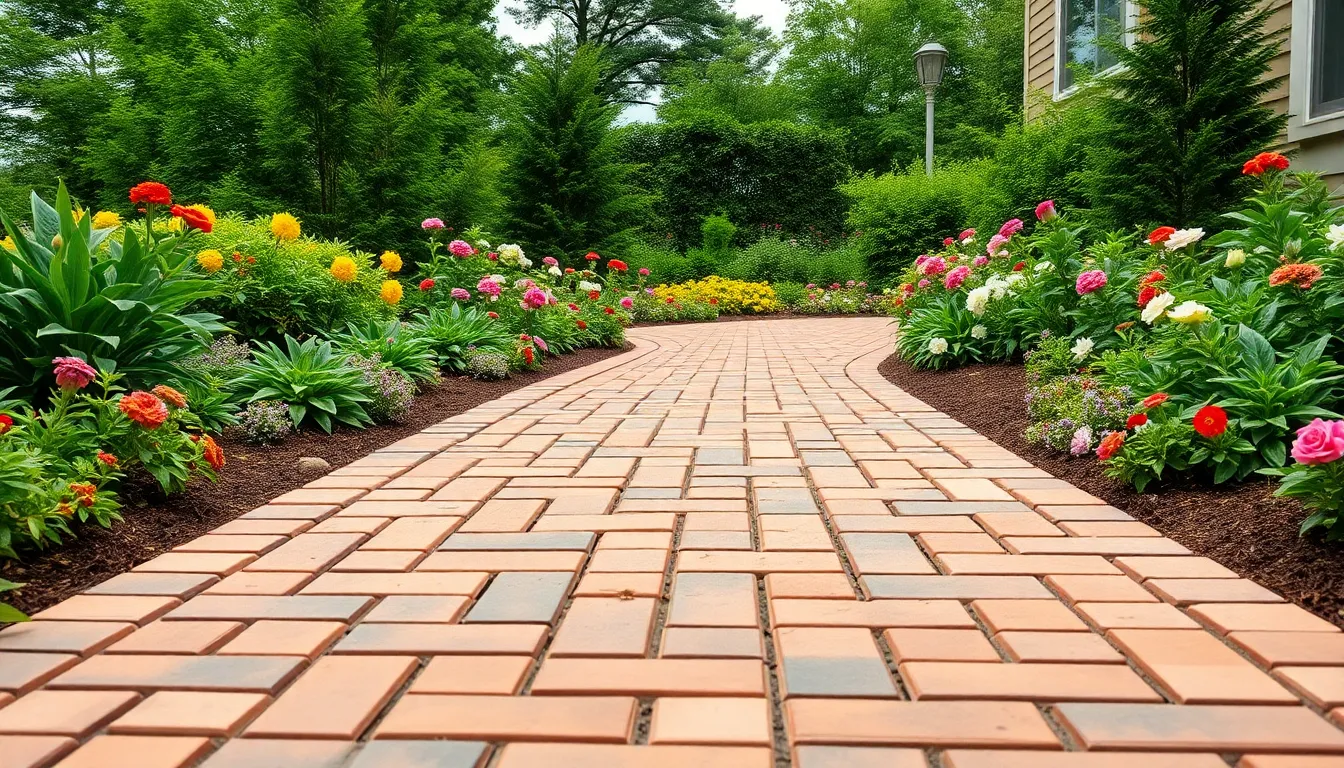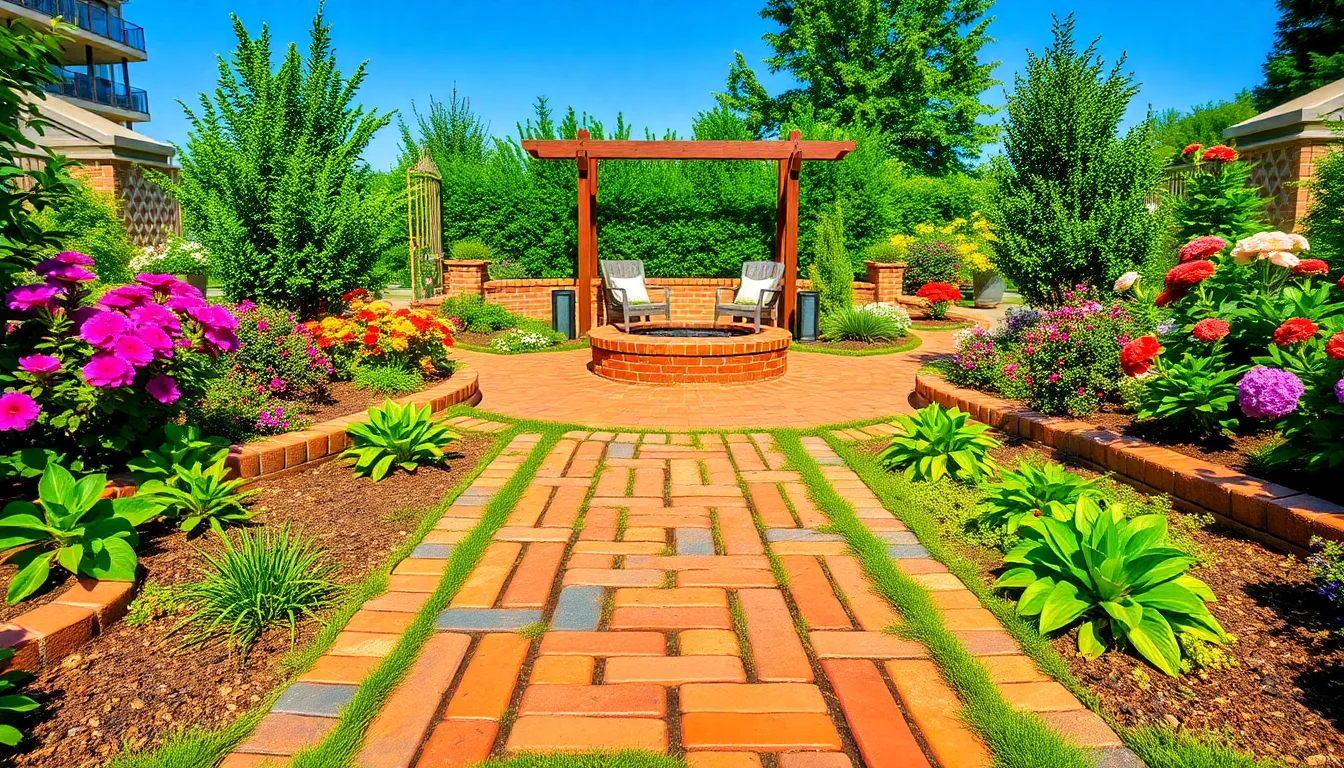When it comes to landscaping, bricks are the unsung heroes of outdoor design. These versatile little blocks can transform a dull yard into a stunning oasis faster than you can say “garden gnome.” Whether it’s a charming pathway, a sturdy retaining wall, or a cozy fire pit, bricks bring both style and substance to any outdoor project.
Bricks For Landscaping
Bricks offer multiple advantages for landscaping applications. Their unique attributes enhance both functionality and aesthetics in outdoor spaces.
Durability and Longevity
Durability characterizes bricks, making them ideal for outdoor use. They withstand extreme weather conditions, including rain and snow, with minimal degradation. Longevity is another significant benefit; bricks can last for decades with proper installation and maintenance. Resistance to fading and cracking ensures that brick features maintain their structural integrity over time. When choosing materials for landscaping, bricks provide an excellent long-term investment due to their enduring nature.
Aesthetic Appeal
Aesthetic appeal is a standout feature of bricks in landscaping design. Available in various colors, shapes, and textures, bricks allow for personalized designs that complement any outdoor theme. They create visual interest in paths, patios, and walls through their versatility. The ability to mix and match different brick styles enables unique patterns and configurations. Enhancing outdoor spaces, bricks contribute to an inviting and cohesive look throughout landscaped areas.
Types of Bricks for Landscaping

Bricks serve diverse functions in landscaping, including defining spaces and adding character. Two primary types of bricks used in outdoor designs are clay bricks and concrete bricks.
Clay Bricks
Clay bricks consist of natural clay materials molded and fired. They provide a classic look with their rich color variations, ranging from reds to browns. In landscaping projects, these bricks excel in thermal insulation and can regulate temperature effectively. Prominent uses include pathways, borders, and garden walls. Additionally, clay bricks undergo minimal weathering over time, retaining their visual appeal. Their porous nature allows moisture absorption, enhancing plant growth in nearby areas.
Concrete Bricks
Concrete bricks are composed of cement, water, and aggregates, offering strength and durability. These bricks come in numerous shapes, colors, and sizes, providing design flexibility. Their versatility allows usage in various landscaping features, including patios, retaining walls, and decorative accents. Concrete bricks resist breakage and fading, making them an excellent choice for high-traffic areas. Furthermore, they often include reinforcing materials that enhance structural integrity. With proper installation, these bricks can withstand harsh weather and remain visually appealing for years.
Creative Uses of Bricks in Landscaping
Bricks serve numerous creative functions in landscaping, enhancing both aesthetics and practicality in outdoor spaces. Here are two popular ways to utilize bricks effectively.
Patios and Walkways
Patios constructed from bricks create sturdy and inviting outdoor gathering spots. Various patterns and colors provide opportunities for personalization, making each patio unique. Walkways built with bricks add charm and direct foot traffic efficiently throughout gardens and yards. Choosing different shapes for bricks can enhance designs, establishing clear pathways while ensuring durability. Bricks resist wear, maintain their appearance over time, and integrate seamlessly into diverse landscape styles.
Flower Beds and Borders
Flower beds bordered with bricks offer an elegant separation between plants and grass. They help maintain soil integrity by preventing erosion while also adding a clear visual boundary. Different brick arrangements can form unique shapes, enhancing the garden’s character. Additionally, raised flower beds made from bricks can improve drainage and provide better access for maintenance. The variety of colors and textures available allows for creative expressions in garden design that complements surrounding landscapes.
Choosing the Right Bricks for Your Project
Selecting the appropriate bricks influences both aesthetics and functionality in landscaping designs. It’s essential to consider several factors that guide decisions.
Considerations for Material
When evaluating materials, the choice between clay and concrete bricks stands out. Clay bricks offer a traditional aesthetic and insulation benefits. Their resistance to weathering supports plant health. Concrete bricks, in contrast, provide unmatched durability, making them perfect for busy areas. Their design versatility allows for diverse landscaping projects. Assessing the intended use helps determine the right material for the job. Concrete bricks perform well under high traffic, while clay bricks excel in visual appeal.
Color and Texture Alternatives
Color and texture greatly impact a project’s visual characteristics. Bricks come in various shades, from earthy reds to cool grays. These options allow for blending with existing landscape elements. Texture also plays a vital role. Smooth surfaces add a modern touch, while rough finishes provide a rustic feel. By selecting a unique combination of color and texture, landscapers create striking contrasts or cohesive designs. Experimenting with different materials helps achieve stunning outdoor spaces. Ensuring the colors complement other features enhances overall appeal.
Maintenance Tips for Brick Landscaping
Maintaining brick landscaping ensures it remains beautiful and functional. Regular care helps preserve the structural integrity and aesthetics of the bricks.
Cleaning and Repairing
Routine cleaning prevents the accumulation of dirt and debris on brick surfaces. Use a broom or leaf blower to clear loose material, then wash with soap and water. For tough stains, consider using a pressure washer at a low setting to avoid damaging the bricks. Repairing cracks or chips promptly extends the lifespan of brick installations. Fill small cracks with mortar or use a specialized brick filler. Keeping joints clean ensures that weeds don’t take hold and compromise the look of pathways and walls.
Seasonal Care
Seasonal care plays a vital role in maintaining brick landscaping. During fall, clear away fallen leaves and debris to prevent moisture buildup that can lead to mold and mildew. In winter, clear snow and ice from brick walkways to minimize slipping hazards. Applying a sealant in spring protects against moisture absorption and stains. Summer care involves regular inspections for signs of wear or damage. Regular checks enable early detection and prompt repair, which can save money in the long run.
Conclusion
Bricks are an essential component in landscaping that combine beauty and practicality. Their durability and versatility make them perfect for a range of outdoor applications. With options like clay and concrete bricks available, homeowners can choose materials that best fit their style and functional needs.
Creative uses of bricks can transform any outdoor space into a welcoming environment. Regular maintenance ensures these installations remain attractive and functional over time. By investing in quality bricks and proper care, anyone can create stunning landscapes that stand the test of time.

